Frequently Asked Questions
Lorem ipsum dolor sit amet consectetur adipisicing elit. Ipsam ex et tenetur voluptatibus dolor nam nulla. Eos quod, alias reiciendis ad, illum temporibus expedita delectus, perspiciatis vitae cum quae voluptatum!
The Amplified Geochemical Imaging® Survey (formerly known as the GORE-SORBERTMSURVEY) is the most accurate, comprehensive, and proven passive sampling technology, which allows environmental consultants to identify and map volatile and semi-volatile organic compounds in air, soil and water. The survey is used for site assessment, optimizing remediation programs and monitoring, vapor intrusion investigations, and surface and ground water sampling and monitoring. The survey includes universal passive samplers, analysis, data reporting in spreadsheet format, contaminant contour mapping, and a final report, in paper and electronic formats.
The unique construction of the universal passive sampler allows it to be placed in unsaturated and saturated soils, sediments, groundwater and other aqueous environments, beneath building slabs and other paved areas, and in outdoor and indoor air environments. No further modification or calibration to the sampler is necessary to sample any of these environments, making it a universal sampler.
Yes, the survey is well-suited for vapor intrusion investigations. The high sensitivity, minimal data variability and accuracy of a passive, time-integrated, sorbent-based sampler, combined with the simple and unobtrusive installation in soils, beneath slabs, and in air, makes the Amplified Geochemical Imaging® Survey a viable and effective sampling alternative to active vapor sampling methods. The Amplified Geochemical Imaging® Survey is an effective initial site characterization tool for vapor intrusion investigations. With the ability to report data in vapor concentration units, risk assessments can also be ascertained.
Yes! The US EPA ETV program verified this application claim. The samplers can be deployed easily in wells as small as one-half inch in diameter. Uptake of compounds dissolved in water is rapid, (typically one hour) and the data can be reported in units of mass and/or concentration. In general, there is a strong correlation between the groundwater data collected passively and with conventional methods. The associated low field costs, non-purge requirements, and unobtrusive sampling make this a viable, effective groundwater sampling alternative.
The feedback continues to be extremely positive, and there has been an overwhelming response to its acceptance by environmental consultants, end-users, and regulators. Users are continually impressed with the versatility of the collector, the quality of the data, and the level of technical support. With the concentration reporting capability, the survey is more versatile.
The Amplified Geochemical Imaging® Survey was introduced in late 1992. Since that time, over 3,000 surveys have been completed worldwide, for virtually all site types and geological and climatological conditions – in air, soil and water.
Undersampling! In an effort to save money, undersampling during the site characterization part of the environmental investigation may occur. In other words, not enough samples are collected to characterize the site properly. Questions pertaining to the subsurface impact are inadequately answered, leading to uncertainty, an unhappy client, and additional regulator scrutiny. The next phase is to expand the soil gas survey, which increases the overall project cost, and adds significant time to the site investigation for all parties involved. Undersampling should be avoided.
The size of the area under investigation, the objective of the survey, and the funds available largely dictate sample spacing. For soil gas sampling, we recommend a sample spacing of 25 to 70 feet, with many surveys utilizing a 50-foot sample spacing. If the objective is to pinpoint the locations of likely sources of contamination, or define a fracture in bedrock for example, then smaller sample spacing is recommended. Larger sample spacing can be employed in areas not believed to be contaminated or if the objective is a broad screening of a large area. If contamination is encountered in these areas, subsequent high-resolution soil gas sampling can be completed later and combined onto one set of maps, resolving the subsurface impact accurately.
A Final Report is issued approximately two to four weeks following the receipt of the samplers at AGI’s laboratory. This time includes the seven to ten business day analysis period, along with the subsequent data table generation, contour mapping, and final report preparation. If a shorter turn around time is required, please call.
The universal passive sampler (formerly known as the GORE-SORBER® Module) is constructed of an ePTFE membrane tube, a chemically-inert, waterproof, yet vapor-permeable polymer, which houses engineered adsorbents. Volatile and semi-volatile compounds present in air, soil gas or water diffuse unimpeded through the membrane to the adsorbent material, while liquid water and soil particles are prevented from contacting the adsorbent. The membrane has over 80% open area and pore sizes that are 1,000 times larger than the largest SVOC molecule, thus offering essentially no resistance to vapor migration to the adsorbent. Compounds moving to the inside of the membrane are immediately collected by the adsorbents.
Yes! The waterproof, vapor permeable membrane construction of the sampler allows it to be placed in virtually any aqueous or saturated soil environment. Dissolved contaminants present partition to vapor, move across the membrane and onto the adsorbent. Samplers can be used to monitor trends in groundwater quality by placing the sampler in the screened intervals of monitoring wells. The hydrophobic nature of the standard membrane and the small pore size, prevent liquid water from penetrating the membrane to depths of 30 feet of water.
The Amplified Geochemical Imaging® Survey has been approved and accepted for use in numerous work plans by state and federal regulators, and is widely known and used by environmental consultants and regulators alike.
Ample amounts of adsorbent, and therefore, large numbers of receptor sites for organic molecules are present in the sampler, and should be suitable for most vapor sampling programs. However, sites known to have high concentrations could saturate the adsorbent during the sampling interval. Similarly, long exposure times could lead to saturation. In the absence of site knowledge, a seven to 14 day exposure period is recommended to identify the most contaminated area.
For soil gas and subslab sampling, we recommend laying out your sampling grid first before installing the samplers into the subsurface. This will allow you to determine the proper sample locations in the field, identify underground utilities, and overcome field obstacles. Once the sample locations are marked (i.e., using pin flags or other non-volatile marking methods), the sampler installation can begin.
Unobtrusive hand tools are usually all that are required to drill a narrow (¾ inch diameter) hole three feet into the subsurface. The installation hole usually does not require any casing. Slide hammers equipped with tile probes, and rotary hammer drills equipped with carbide tipped drill bits will suffice for most universal passive sampler installations. These tools can be purchased from a variety of field equipment vendors or rented from industrial tool rental centers. “Geo-Probe” type tools can be used to create a hole for deeper installations.
There are no limitations on depth for sampling soil gas using the universal passive sampler. Sampling depths are somewhat dependent on the investigation objectives and/or site restrictions (e.g., unexploded ordnance). Soil gas sampling should be collected at a depth to minimize surface and near-surface variables that may influence the soil gas signal. The typical installation of the universal passive sampler is three feet below ground surface. This drilling depth is achievable with simple hand tools. The results of more than 3,000 surveys demonstrate there is no adverse impact on sampling the soil gas at this depth. In addition, successful Amplified Geochemical Imaging® Surveys have been conducted with shallower and deeper sampler installations.
A stainless steel insertion rod is supplied with each Amplified Geochemical Imaging® Survey order. One end of the rod fits into a small pocket cut in the universal passive sampler. The opposite end of the sampler is tied to a strong cord, which is then tied to a cork (cord and cork supplied by AGI). The assembly is slid into the hole to depth, and the rod extracted. The sampler will slide off the end of the insertion rod with a quick twist, or by pressing the assembly against the side of the hole when extracting the rod. The hole is sealed with the cork. The sampler serial number and sample location are noted on the field map, and the Installation and Retrieval Log is updated as the installation progresses to the next sample location. For best results, the insertion rod (and the installation hole drilling equipment) should be cleaned to remove soil, between sample locations.
If the objective is to delineate the contaminant impact at depth, then the universal passive samplers should be inserted into narrow-diameter installation holes that extend to at least three feet below the slab and beneath any pooling of vapors under the slab. As with soil gas sampling, the sampler is secured by a string and cork. The hole can be covered with a bentonite patch for added safety and sample integrity in high traffic areas. If the sampling is part of a vapor intrusion investigation, the universal passive sampler can be inserted into holes extending immediately beneath the bottom of the slab, and secured as above. For vapor concentration data, exposure times should be one to three days.
The Amplified Geochemical Imaging® Survey was introduced in late 1992. Since that time, over 3,000 surveys have been completed worldwide, for virtually all site types and geological and climatological conditions – in air, soil and water.
If the sample locations remain marked in the field, also with minimal or no vandalism, the retrieval process takes a fraction of the time it took to install the samples. Two experienced field technicians can retrieve more than 120 samplers in a half-day for soil gas investigations. Similar numbers are achievable with subslab and air sampling retrieval events. Field costs may be lowered further by having one technician retrieve the samplers.
For site screening using soil gas or subslab vapor sampling, a 10 to 14-day period will most likely allow the samplers to reach a state of equilibrium with the surrounding environment, and provide a representative site distribution. Longer exposure periods do not appear to be beneficial except at sites where depth to contaminated groundwater is great, the contaminant levels are very low, or the contaminants of concern have high molecular weights such as PAHs. Amplified Geochemical Imaging® Surveys have been successful with exposure periods of a few hours to a few days. For vapor concentration data reporting, shorter time periods of three days in air and one to seven hours in water, are preferred at sites known or suspected to have high concentrations of contaminants in vapor. This exposure period minimizes the potential for adsorbent saturation.
Validation studies were conducted involving sampler shipping and storage under extreme and varying temperature conditions. The sampler and sample jar design eliminate any need for refrigerated storage or shipment on ice. This lowers the shipping and handling costs, and increases the flexibility in clients’ return shipping schedules. AGI recommends that steps are taken to ensure a tight seal on the glass container: Remove all visible soil from the jar threads and check to see that the sampler tubing is not pinched between the jar lid and jar. Over tightening will crack the jar lid.
Engineered polymeric and carbonaceous adsorbents are used. These adsorbents have a strong affinity for a broad range of compounds (VOCs, SVOCs, and PAHs) present in fuels, chlorinated solvents, and other chemical mixtures, but are hydrophobic (water repellent).
Several target analyte lists are available depending on the compounds of interest, and include petroleum-related and chlorinated compounds. The analytical options include the most commonly requested compounds for environmental investigations, and include compounds in the C2 to C20 range. Non-target compounds that have favorable properties for detection in soil gas can be reported per request. In addition, explosive breakdown compounds, PCBs, pesticides, herbicides, elemental mercury, sulfur compounds, and chemical warfare breakdown compounds have been successfully reported using the universal passive sampler. If there are compounds of concern that are not part of AGI’s analytical options, call us, and our staff of experienced chemists will provide an informed answer as to whether the survey can report those compounds with confidence.
The Amplified Geochemical Imaging® Survey has reported compounds as “light” as vinyl chloride through “heavy” compounds up to and including pyrene in the vapor state. Compounds that have very low volatility are generally not good candidates for vapor sampling. Compounds that are highly soluble in water, for example, ketones and alcohols, are typically not available in moist vapor environments, and may not be good candidates for vapor sampling technology. Experience in the field, combined with benchtop experiments, demonstrate compounds should have vapor pressures that exceed ~1.5 x 10-6 mm Hg and a Henry’s law constant exceeding ~1.5 x 10-9 atm m3/mole are needed to be detectable in vapor. If there are compounds of interest that are questionable candidates for detection in vapor, please send your list to AGI, and our staff of experienced chemists will provide feedback regarding the probability of detection.
A stainless steel insertion rod is supplied with each Amplified Geochemical Imaging® Survey order. One end of the rod fits into a small pocket cut in the universal passive sampler. The opposite end of the sampler is tied to a strong cord, which is then tied to a cork (cord and cork supplied by AGI). The assembly is slid into the hole to depth, and the rod extracted. The sampler will slide off the end of the insertion rod with a quick twist, or by pressing the assembly against the side of the hole when extracting the rod. The hole is sealed with the cork. The sampler serial number and sample location are noted on the field map, and the Installation and Retrieval Log is updated as the installation progresses to the next sample location. For best results, the insertion rod (and the installation hole drilling equipment) should be cleaned to remove soil, between sample locations.
The Amplified Geochemical Imaging® Survey has reported methane. However, AGI is not satisfied with the reproducibility of the results, and has chosen not to offer methane as a target analyte at this time. However, the survey is capable of collecting alkanes and mercaptans (odorants) to delineate the impact of natural gas and propane.
A modified US EPA 8260/8270 analytical method, using gas chromatography (GC) and mass selective detection (MS), following thermal desorption, is used to analyze all passive samplers (field deployed, trip blanks, and QA/QC samples). Calibration standards (five point) containing the target compounds are introduced in the analytical sequence. Field sample results are compared against the calibration standards. If the compound in question satisfies the identification criteria, and it is present in quantities that exceed the method detection limit, we consider it a true result. Compound levels reported from the field installed samplers that exceed the method detection limit and any levels observed in the QA blanks, are considered derived from the field. Field samples, trip blanks, and other QA blanks, are subject to the same analytical methods and are analyzed concurrently.
The universal passive samplers are constructed in a clean room. Before the samplers are shipped to the field, they must pass internal QA criteria for cleanliness and “fitness-for-use.” Samplers shipped to the field are accompanied by trip blanks. Trip blanks are selected, by the consultant, from the shipment of samplers slated for installation. They are left unopened and travel from AGI to the client, to the field during the installation and retrieval, and then returned to AGI with the rest of the samplers. Trip blanks document any ambient contamination that may have occurred during the travel and storage of the samplers away from AGI. Each sampler is stored in individual glass jars, uniquely labeled with its own serial number. The jar lids have excellent sealing capabilities, and custody seals are affixed to the lid and jar. Completed samplers are stored in zero-contamination cabinets until an order is received. All samplers are tracked internally by their serial number. All sample lots are tested for ambient contamination present during their construction. Sample lots that do not meet QA criteria are destroyed. Analytical QA includes the use of instrument blanks and method blanks to purge the instrument of residual organic vapors, and document ambient impact that may have occurred during the analytical sequence, respectively. These blanks are distributed throughout the analytical sequence. Mass spectrometer tuning standards are analyzed and must meet QA criteria before a sequence can advance. The sampler serial number serves as the Chain of Custody sample ID from the manufacturing through analysis, mapping and reporting. We do not subcontract any part of our sampler manufacturing, standard analyses, or reporting to outside contractors.
Under ambient temperatures, minor desorption of very light compounds may occur naturally from the sorbent. However, the adsorbents are quite tenacious, and hold onto the vapor molecules strongly. The thermal desorption during the analytical process are at temperatures far greater than those experienced during sampling, shipping, and storage of the sampler. The sample containers are small and have tight, well-sealed lids, minimizing vapor loss during shipping and storage.
Normal turn around time (TAT) is seven to ten business days to produce a data table after the samplers are received at AGI’s laboratory. The table is then faxed or emailed to the client. The size of the project will dictate the actual delivery of the results, large projects will require longer TATs. Universal passive samplers are analyzed on a “first-in first-out” basis. Expediting services are available for all projects for an extra fee. When requested, a 50% surcharge is added to guarantee a five-business day TAT, a 25% surcharge for a guaranteed ten-business day turn around time, to produce a data table.
Each sampler contains a minimum of two samples of adsorbent available for analysis. One sample is analyzed, while the second sample is stored for a period of at least 15 days following the original analytical sequence. This provides a backup sample in the event of an instrument malfunction or if additional QA is required. In almost all cases, the duplicate results have compared extremely well with the original results. Duplicate values within the same order of magnitude are directly comparable. Often the absolute values between samples and their duplicates are very close. In the field, additional samplers can be co-located at each sample location, and also provide data for QA duplicate analyses.
At present no certifications exist for the analysis of passive vapor samplers. However, AGI has a Quality Assurance Manual, Operating Procedures and Methods, which prescribes and documents all standard operating procedures and QA/QC, from sampler manufacturing to final reporting, and follows accepted methods of analysis and reporting. The quality assurance program is consistent with Good Laboratory Practices (GLP), ISO Guide 25, “General Requirements for the Competence of Calibration and Testing Laboratories,” third edition, 1990, and NELAP. We are routinely audited internally, and have been audited by external parties. The Amplified Geochemical Imaging® Survey usually meets EPA Level 1 and Level 2 Data Quality Objectives (DQOs) to assist in determining the presence and distribution of organic compounds.
In some cases, when an initial site characterization indicates the extent of the subsurface impact extends beyond the sampled area, an additional soil gas survey(s) is implemented. AGI recommends that samplers be deployed as soon as practical, and that several new samplers be placed at locations of prior samplers (co-located). AGI suggests co-locating the samplers at locations covering the range of the mass levels reported, from non-detects to maximum levels, from the original survey. This will provide duplicity in the data, and tie the surveys together. By holding variables such as exposure time, installation depth, and analytical procedures constant from one survey to the next, AGI is confident the results from two or more surveys are comparable. The results can be combined onto one set of maps providing a comprehensive, accurate view of the subsurface impact.
In general, the results have a strong positive relative correlation between the soil gas data and what is observed during subsequent matrix sampling. In other words, at locations where the soil gas levels are high, there is a corresponding high probability that the compound is present in the subsurface. With lower soil gas levels, the probability of finding the compound decreases.
The Amplified Geochemical Imaging® Survey delineates overall contamination from the soil and groundwater. However, by placing the passive sampler directly in the aquifer, via a piezometer or monitoring well, a groundwater concentration result can be reported.
In most site characterization programs, the soil gas data delineates the nature and extent of the subsurface impact by volatile and semi-volatile organic compounds. The soil gas data at a sample location can be compared relative to the soil gas data reported from the other sample locations across the site. Even if the soil gas mass levels are fairly low, patterns in the spatial distribution will appear indicating the area(s) of greatest subsurface impact. It is in these areas, that subsequent matrix sampling should occur.
On a standard basis, AGI reports air, soil gas, subslab vapor and water data, by target compound desorbed from the universal passive sampler, in units of micrograms (mass). However, upon your request, concentration data can be reported for samplers deployed in any of these sampling environments. An accurate recording of the exposure period is required. For soil gas, you will also need to provide soil porosity and percent water saturation values.
Several methods exist in the literature (e.g., ASTM, MDHS, NIOSH, and others) which document clearly the procedure to calculate vapor concentration data from a passive, sorbent-based sampler such as the universal passive sampler. These methods describe the requirements to determine the uptake rate of the sampler over time (volume of vapor), and correction factors for the sampler, sorbent and analytical method. Combined with the mass desorbed from the sampler, the concentration is readily calculated. The body of literature in general on passive sampling and concentration data reporting is quite large, and stems from decades of research in the industrial hygiene arena. For soil gas sampling, including a correction factor that accounts for soil porosity and moisture content is necessary.
Yes! One application of the Amplified Geochemical Imaging® Survey is to track the changes in contaminant levels over time in the subsurface. By placing the collectors in the same locations during each sampling event, holding the exposure time constant from sample event to sample event, applying an identical analytical process to every sampler, and holding the color contour interval scheme constant, changes in soil gas contaminant levels are readily observed. With this technique, you can monitor the affects of your natural or stimulated remediation program. Similarly, you can monitor changes in contamination following a property transfer.
The main reason is the volatility of hydrocarbon compounds – C20 is the approximate limit of semi-volatile behavior, beyond which hydrocarbon compounds do not partition into the gas phase to an appreciable amount. The AGI Passive Sampler uses adsorbents that provide very good capability for volatile and semi-volatile organic compound collection. These sorbents are encased in a permeable membrane with >80% open area and pores about 1000 times larger than a C20 molecule. If the compound does not partition into the gas phase, it will not pass through this membrane to reach the sorbent material.
Normal and branched alkanes, cycloalkanes, alkenes, and aromatic hydrocarbons predominate, but our current target list of approximately 90 compounds also includes certain terpenoids, furans, aldehydes and some sulphur compounds. Although physical property data for compounds above C6+ indicate that at standard temperature and pressure (STP) (or near surface conditions) these compounds are in the liquid phase. Each exerts a vapor pressure and thus vapor phase constituents of these compounds are always present in soil gas or at STP. By way of example, styrene, xylene, and diesel are all liquid at STP, but each exert a vapor pressure that allows detection by their odor. Thermogenic compounds in liquid phase at STP have been measured in surface soil gas separating them from Recent Organic Matter (ROM) signatures.
The list of volatile and semi-volatile organic compounds reported by the Amplified Geochemical Imaging Exploration Survey is purposely broad in scope, so as not to disqualify compounds that might have significant, yet unknown, correlation to petroleum emanation. Since the interactions and reactions of hydrocarbon compounds at the surface are not well understood, any selective bias would risk the exclusion of potentially important compounds, and could result in a service that is not as powerful in the delineation of petroleum prospectivity.
For most cases, it is preferable to use fresh undepleted reservoirs or wells for modeling because the surface signal declines as reservoir pressure and thickness decrease. However, there is insufficient evidence from past projects to develop specific rules on minimum reservoir pressures for proper modeling locations. The current guideline is to select the best available productive well sites for modeling purposes. Depleted signatures can be differentiated from dry hole signatures, and if a depleted well is modeled, a depleted signature model will result. Obviously, the geochemical anomalies identified by such a model will represent depleted conditions. This sort of model result may be sufficient to meet certain survey objectives, perhaps involving the mapping of reservoir charge versus no reservoir charge. Another benefit to using partially depleted wells is to confirm areas with lower productivity especially in field development.
AGI Exploration Survey is a model-based method. Samplers placed near production well sites are used to define the character of hydrocarbon emanation, while samplers placed near dry well sites are used to define the character of geochemical background. The samplers selected for model development are then assumed to represent the essence of petroleum emanation (from subsurface accumulations through to the surface via vertical migration microseepage). If this assumption is valid, then the model reflects subsurface signature and the model results (in the form of anomalies) indicate places where the same conditions prevail. Fault signatures should be significantly different than vertical migration microseepage. Fault seepage involves the mass movement of fluids along continuous pathways from the reservoir to the surface, while microseepage involves the movement of hydrocarbon molecules through microscopic pore spaces and along mineral grain boundaries. Fault signature typically shows enhanced response for heavy hydrocarbon compounds as opposed to a typical microseepage signature for hydrocarbon emanation. Therefore, our results have no comment on the condition of fault migration in the survey area, as our modeling does not proceed from a fault emanation signature. There may be significant fault leakage, but the chemical profile of such seepage would be different from the model of microseepage emanation and would not be shown as anomalous. On the other hand, faults can often be identified or inferred from the chemical signature or from the mapped anomalies.
No – source rock signatures do not appear to mask the emanation of reservoir hydrocarbons at the surface. Organic compound emanation from source rock beds with high total organic carbon (TOC) content yield a distinct signature from reservoir petroleum signatures at the surface. An extensive source rock bed may in fact contribute to the regional background geochemical signature. The interpretation of AGI Exploration Survey data includes techniques used to discern various geochemical signatures, including regional background character.
The influence of shallower (biogenic) hydrocarbon sources can be filtered out of interpreted results through the appropriate modeling of deeper thermogenic accumulations. The geochemical modeling process developed for use with AGI Exploration Survey data allows the discrimination and separation of such undesirable influences.
An analogy would be comparing the price of 2D seismic to 3D. In fact we are higher than other methods because we are the only method that can not only detect hydrocarbons, but we analyze for compounds from C2-C20. Other methods only analyze C1-C5 alkanes. This broader detection range allows us to differentiate between “background”, oil, gas, and condensate, and delineate charge boundaries. This provides our customers with the most accurate analysis possible for reducing exploration risk.
In fact, we only employ a crew to travel to the field one time. Deployment and retrieval is scheduled such that as the last point is installed, it is time to go back to the first point installed and begin retrieval. This insures that the crew is only mobilized once.
We try to schedule the whole deployment and retrieval process to take place within about 25 days or less.
All samples are installed with accurate GPS coordinates and under the supervision of a skilled field supervisor. Our retrieval rate for over 2500 surveys in the past 10 years is above 97%.
Our sampling method allows deployment in all types of terrain including swamp or transition zones. We have conducted numerous surveys in swamp locations all over the world successfully. The GORE-TEX® membrane allows direct sampling in water depths to 30 feet without harmful effects or contamination. (GORE-TEX ® is a registered trademark of W.L. Gore and Associates)
Our research indicates that exposure beyond the recommended exposure period of 17 days does not substantially change the mass or chemical composition detected. Samplers left in the field with exposure times of 20, 30, 60, and 90 days were within a 98% correlation coefficient.
Passive refers to the time-integrated collection of soil vapors via a buried, sorbent-based collector, over an extended period of time (typically 30-60 days). The collector is buried in a small diameter hole (typically 1/2 inch or less) that is backfilled with native soil. The collector is retrieved after the sampling period and analyzed for target compounds. The passive sampling approach provides a more representative sample of soil vapor conditions over time, compared to active sampling methods that collect a single, instantaneous sample.
Passive sampling is based on the direct detection of vapors emanating from mineralization. Typical compunds include sulfur compounds, alkanes, and methylated organics that result from oxidation-reduction reaction during mineralization. This is different from many other surface geochemical techniques, which look for inorganic compounds. The primary advantages of passive sampling (days) versus short term, “active” sampling (minutes) include the ability of passive techniques to successfully work in soils with low permeability or high moisture, to yield high sensitivity by concentrating the vapors, to work in a variety of ambient conditions and to detect a broader range of compounds than active methods.
In theory, the deeper the mineralization, the more sensitive the surface technique needs to be for accurate and sensitive detection. Successful surveys have been conducted over deposits as deep as 600 meters.
This is possible if the mineral sources are chemically different. Integrating sample data from known mineralized zones and background areas (modeling) is critical for success in this application.
Surface geochemical methods primarily delineate the aerial extent of mineralization but do not yield information regarding deposit depth.
Organic compounds from shallow contamination can be detected but, with the appropriate geochemical method, can be excluded from the final geochemical interpretation.
Sampling with passive techniques integrates signal over time, therefore these impacts are minimized and do not affect results. However, results from active soil gas methods that sample over a very short period of time can be significantly impacted by soil moisture or permeability. AGI’s passive sampler uses proprietary engineered hydrophobic adsorbents along with water management techniques that minimize the effects of moisture.
Possible sources of organic gases include methylated compounds from bio-oxidation, organic compounds incorporated in the hydrothermal fluids from sedimentary rocks, and oxidation reaction products, especially sulfur compounds.
This varies with deposit type; a porphyry system may only require one sample per square kilometer, whereas a vein deposit would require closer sample spacing. We work closely with the client’s exploration staff to clearly understand the objectives and deposit model in order to design an effective survey.

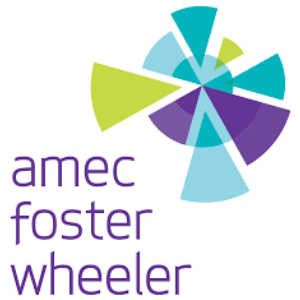


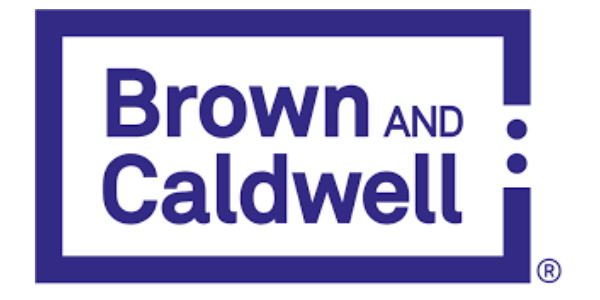
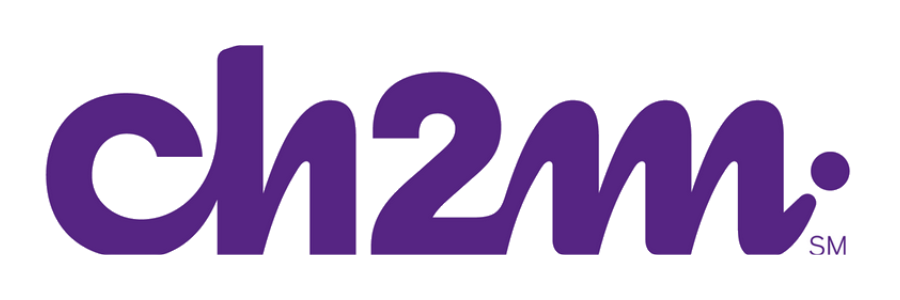
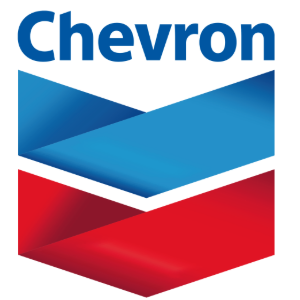

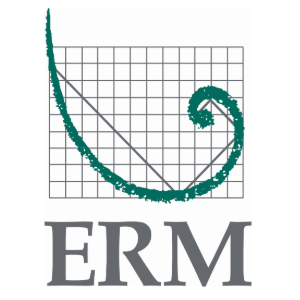

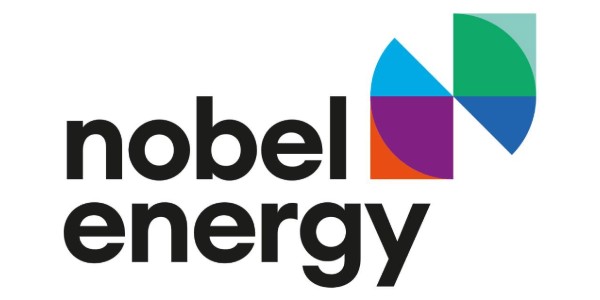


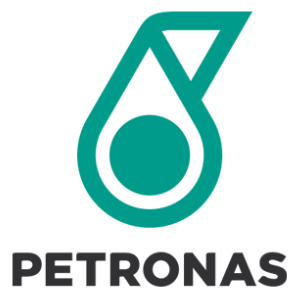
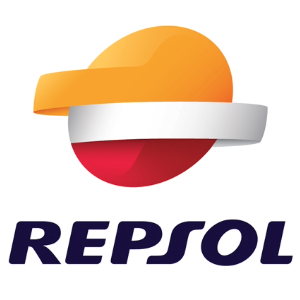

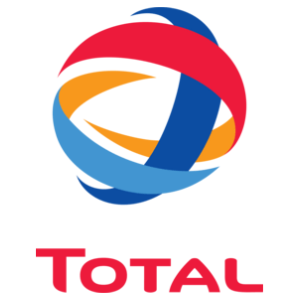

















Connect with us.
US Office
COLORADO - Corporate Offices
7625 W 5th Ave, Suite 206N, Lakewood, CO 80226
DELAWARE - Laboratory and Manufacturing
7112 W. Jefferson Ave, Suite 106
Lakewood, CO 80235
TEXAS - Branch Office
7112 W. Jefferson Ave, Suite 106
Lakewood, CO 80235
International Office
INDONESIA C/O PT GEOSERVICES
Jl. Minangkabau Barat No.34
Jakarta Selatan 12970